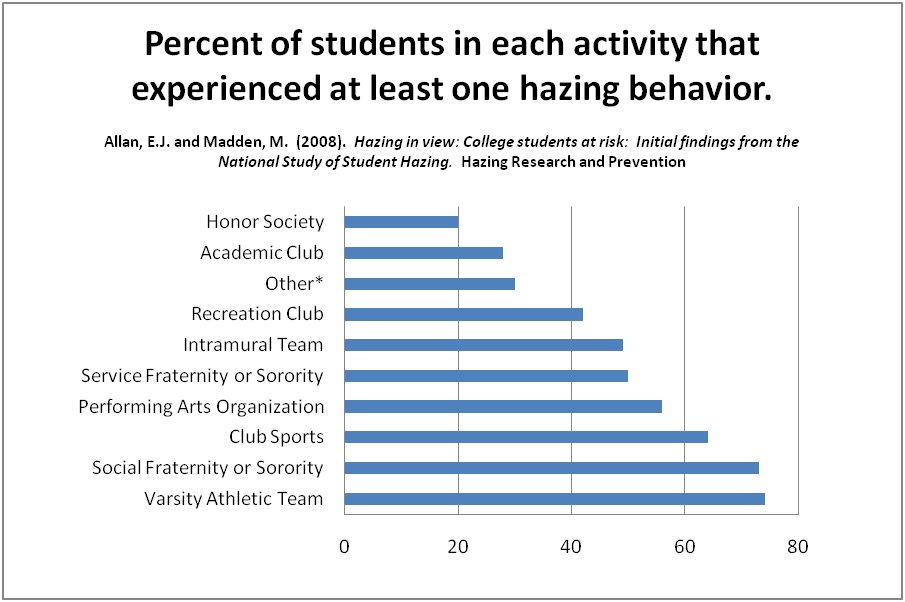Hazing Statistics and Research
Hazing is more prevalent than you know and can be subtle or overt. Many assume that hazing is relegated to fraternities and sororities, but that assumption is grossly inaccurate. Hazing occurs in all groups, like pre-professional organizations, sports teams, music groups, and other clubs.
According to national statistics from insidehazing.com, hazingprevention.org, and hazingstudy.org…
- More than half of college students are involved in some form of campus hazing².
- In 95% of hazing cases, students who were aware they were hazed did not report it².
- In 25% of hazing cases, coaches or advisors who were aware of hazing incidents did not report it².
- For every 10 students being hazed, only one of them realizes that they have been hazed².
- In more than half of the hazing incidents, a member of the offending group posts pictures on a public web space.
- Students are more likely to be hazed if they knew an adult who was hazed¹.
- At present in the United States, 44 states have anti-hazing laws².
- Since 1970, there has been at least one hazing-related death on a college campus each year².
- 82% percent of deaths from hazing involve alcohol².
- The first recorded incident of hazing involving sexual abuse occurred in 1983. Other hazing incidents involving sexual intimidation, nudity or stimulation, have been increasing in their frequency since 1995².
Where Does Hazing Take Place?

Athletics Statistics:
- More than 250,000 students experienced some sort of hazing to join a college athletic team¹.
- 50% of the female NCAA Division I athletes reported being hazed³.
- More than 20% of female NCAA athletes were subjected to alcohol-related hazing; however even a higher percentage admitted to “mental hazing” which ranged from singing to being kidnapped³.
- 10% of the female NCAA athletes were physically hazed including being branded, tattooed, beaten thrown in water of having their head forcibly shaved³.
- 6-9% of the female NCAA athletes were subjected to sexually related hazing including harassment, actual assault or being expected to simulate sex activities³.
References for above statistics:
- Alfred University Study, Dr. Norm Pollard, Dr. Elizabeth Allan et al, 1999
- National Study of Student Hazing, Hazing in View: Students at Risk, Dr. Elizabeth Allan and Dr. Mary Madden, 2006 – 2008
- Dissertation, Dr. Colleen McGlone, 2005
- Insidehazing, Dr. Susan Lipkins, 2006
Research
- University of Maine Study – Hazing in View: College Students at Risk
- Langford & Associates – Comprehensive Approach to Hazing Prevention
- Infographics from Hazing in View: College Students at Risk